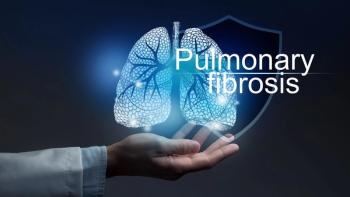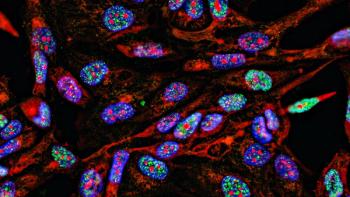
- Pharmaceutical Technology-08-02-2018
- Volume 42
- Issue 8
The Challenge of Building Better Biologic Drugs
Development costs and time to market continue to put pressure on the biopharma industry, driving the need for innovation in methods and technologies.
As the pipeline of biologics matures, the pharmaceutical industry is expected to see new biotherapeutics that offer improved efficacy. Pressure from the current healthcare environment, however, is pushing the pharmaceutical industry toward lower-cost therapies and faster times to market.
The CHO standard
Biologic drug development has traditionally depended on the use of Chinese hamster ovary (CHO) cells. Over the past three decades, the CHO cell line has become the automatic choice of expression system for biomanufacturers, notes Mark Emalfarb, CEO of Dyadic International, a biotechnology company focused on developing biologic vaccines and biologic drugs.
Emalfarb notes that the pharmaceutical industry is nonetheless experiencing the limitations that CHO expression yields present, which is complicated by pressures to develop affordable drugs quickly. “These [limitations] are particularly evident for the next wave of biologics, bi-specific, and tri-specific antibodies. The relatively low yields and relatively high costs of producing biologics with CHO appear to make it less sustainable and less commercially affordable for producing these more complex molecules,” Emalfarb says. “In a way, using CHO cells to develop and manufacture biologics is a bit like driving a 1900s model car in a 2020 Tesla world.”
Using CHO cells as the industry standard for biologic drug development has several major drawbacks, adds Mario DiPaola, PhD, senior scientific director at Charles River Laboratories, a contract research organization. The most significant drawback is product yield, which is typically less than one gram per liter, followed by costs related to the extensive cell-line development and limited cell viability for production.
“CHO expression systems work reasonably well for expression of less complex glycoproteins, but not well for new product modalities. For instance, in the case of AAV [adeno-associated virus]-like particle-based products, many developers are relying on HEK293 cell lines. Aside from yield and cost issues, the CHO cell-based expression system has other limitations related to glycosylation,” DiPaola explains. “The introduction of the immunogenic Galactose-alpha 1,3–Galactose linkage or N-glycolylneuraminic acid into glycan moieties of glycoproteins lacks certain transferases such as alpha 2,6 sialyltransferase, and it fails to produce any glycan with alpha 2,6 sialic acid.”
Driving innovation behind better biologic drug development is decreasing the cost of these therapies, which is quite high for most biologic drugs, DiPaola comments. “It is important to drive the costs down through innovations in order to lower both the costs of development and costs of production. It is interesting to note that over the course of the past two decades the time from patent filing to market has increased from an average of 130 months to about 150 months, and the cost of getting a biologic approved has gone from approximately $650 in 1996 to more than $2 billion in 2018,” DiPaola says. “Clearly, these trends must be reversed so that more patients can benefit from these drugs at reasonable costs.”
In addition, there is a separate need for more complex drugs, including more effective antibody drug conjugates (ADCs), multi-valent antibodies, and gene/cell therapies, “all of which industry to ensure success,” according to DiPaolo.
Emalfarb further comments to say that “‘better, faster, more affordable’ is a mantra we should all take to heart as we pursue the knowledge that could-at least potentially-make it easier to make the drugs that could save lives more affordably.”
“It is the responsibility of those working in the industry to enhance pharma companies’ ability to develop and make drugs efficiently and more cost-effectively. A large part of this entails encouraging pharmaceutical companies to study the potential of viable alternatives to CHO and to Escherichia coli (E. coli). Working together, government, regulatory agencies, academia, and pharma and biotech companies can indeed change things for the better,” Emalfarb says.
Exploring a new expression system
A cell source being explored as the basis of a new expression system for biologic building blocks is the fungus Myceliophthora thermophila, nicknamed C1, which Dyadic has been developing for the past two decades. C1 technology is a fungal expression system for gene discovery, development, and production of enzymes and other proteins.
Known as the C1 Expression System, Dyadic’s technology turns genes into a broad range of products and helps to overcome some of the inadequacies inherent in existing expression technologies used for gene discovery, product development, and commercialization.
“C1 scales up the rate at which enzymes and other proteins can be produced and was initially used to produce biofuel and other enzymes in greater amounts and in less time than was possible before. To develop C1, our scientists exposed the cells of the Myceliophthora thermophilaspecies of fungus to ultraviolet light. They expanded and reinforced beneficial mutations to change the shape of C1 from long, spaghetti-like strands to short, grain-sized sections. Since C1 fungal cells secrete enzymes from the ends of the filaments, there were more secreting ends, multiplying the potential total yield of proteins,” says Emalfarb.
“Furthermore, due to its new shape, C1 became easier to grow in large tanks. It offers a much shorter production time for monoclonal antibodies (mAbs) than CHO, requires smaller production facilities, and does not require expensive production media nor viral purification. When C1-expressed proteins are secreted from the cells, they come out in a purer form than CHO-produced mAbs,” he adds.
For those reasons and others, C1 is said to represent an “innovation” in biologic drug development. “We hope one day C1 will be a safe and efficient expression system that can help speed up the development, lower the production costs, and improve the performance of biologic vaccines and drugs at flexible commercial scales. We believe it may also potentially enable the development and commercialization of genes that are difficult to express at reasonable yields in CHO, E. coli, and other cell lines and might also be able to produce larger amounts of protein to enable drug discovery and development to move forward faster,” Emalfarb states.
Research results to date support the use of the C1 expression platform on an industrial scale in the biopharmaceutical industry. “In January 2018, for example, the maximum mAb yield from C1 stood at 1.34 grams per liter per day (G/L/d). Two months later, we had raised that to 1.71 G/L/d,” Emalfarb explained, then continued, “As of May 2018, this figure had been raised again to 2.46 G/L/d-representing an 84% improvement in productivity in only four months. This progress is accompanied by a corresponding 67% drop in the cost of the already low-cost, chemically defined medium required to produce the mAbs” (1,2).
Charles River, which worked on approximately 80% of the drugs approved by FDA last year, has many technologies and methodologies that can be applied throughout the development cycle of a biologic drug, according to DiPaola. The company specifically develops a wide spectrum of animal models for testing products against specific diseases to screen, confirm, or validate a product’s functionality and biological activity in vivo in the early stages of development.
“Charles River also possesses a variety of in vitro screening assays to assist in identifying the most potent drug candidates. To help drug developers weed out toxic drug candidates early in development, Charles River offers toxicological studies based on robust protocols utilizing multiple species,” DiPaolo says. The company also offers capabilities that support production cell-line characterization, cell banking, and viral clearance for purification-process validation.
Improving the system
The C1 expression platform offers the biopharmaceutical industry potentially significant time and cost savings at each stage of cell development and biomanufacturing process development when compared to CHO cells, Emalfarb remarks.
For one, C1 creates a stable cell line in a shortened timeline. “Dyadic has estimated a reduction of 50% in the time from gene fragment to stable cell line; C1 stable cell lines can be developed in just over three months versus six-plus months typically needed for CHO,” he says.
Other “savings” benefits of the C1 expression system, according to Emalfarb, include:
- Significant upstream bioprocessing savings: C1’s doubling time (rate of cell growth is two hours versus 20 hours for CHO cells), leading to an estimated 10-day savings in time for the cell growth phase to charging the production fermenter with the required cell densities needed for commercial biologics production.
- Greater savings once commercial fermentation starts: The production time for C1 is significantly shorter-four to seven days versus CHO, which is typically a 12- to 14-day process, offering a 50% or even greater time savings.
- Saving on cell media costs: Based on the large difference of media needed for production using CHO, C1 achieves higher productivity using low-cost-defined synthetic media, estimated to offer a cost savings of five to 10 times over CHO media.
- Additional downstream processing savings: These are expected when using C1 versus CHO including the elimination of two viral inactivation steps that are typical in CHO biomanufacturing.
“As indicated earlier, C1 shaves off 50% or even greater time savings in the commercial fermenters, but most importantly, C1’s productivity is higher despite the much shorter time needed for production of biologics,” says Emalfarb.
Dyadic recently reported that the company was able to produce a fulllength mAb with productivity of nine grams per liter in 90 hours, or in less than four days (1). This represents a greater-than-twice the industry average productivity for CHO, which is reported to be approximately 4 G/L, in one-third the time. “Putting this in perspective, C1’s mAb productivity equates to 2.4 G/L/d versus .30 G/L/d for CHO using much lower-cost media and the elimination of two viral purification steps typical for CHO,” Emalfarb notes.
Industry challenges
The most pressing challenges that the biopharmaceutical industry faces are development cost and time, both of which are becoming unsustainable for the industry, DiPaolo states. Another significant challenge is the lack of internal innovation and research capabilities across many of the medium-to-large size biopharmaceutical companies. “As a result, they must rely primarily on collaboration, in-licensing, or acquisition of new start-ups for innovation and new product leads,” DiPaolo says.
“Some significant re-engineering is needed within the industry to bring about new strategies and approaches, possibly through greater use of automation, robotics, and artificial intelligence to allow for faster transition of biologic drug candidates from lab bench to clinic and then from clinic to market. These changes are necessary in order to address unmet medical needs, such as treatment of types of cancers, Alzheimer’s disease, and certain autoimmune diseases in a quicker and financially efficient manner,” DiPaola asserts.
References
1. Dyadic, “Results Highlighted in Bioprocess International and the Global Bioprocessing and Bioanalytics Conference 2018,” Press Release, June 18, 2018.
2. Dyadic, “Dyadic-C1 Technology,” presentation at Global Bioprocessing and Bioanalytics Conference (Prague, Czech Republic, 2018).
Article Details
Pharmaceutical Technology
Vol. 42, No. 8
August 2018
Page: 16–19
Citation
When referring to this article, please cite it as F.Mirasol, “The Challenge of Building Better Biologic Drugs," Pharmaceutical Technology42 (8) 2018.
Articles in this issue
over 7 years ago
Pharmaceuticals in the Environmentover 7 years ago
E&L Risk Assessment for Biologic Drug Productsover 7 years ago
Exploring a Modern Control Strategy for Wurster Coatingover 7 years ago
Key Considerations in Multilayer Tabletingover 7 years ago
FDA is Not Playing Games with Biosimilarsover 7 years ago
Benchtop Sample Preparation Stationover 7 years ago
Single-Use Electromagnetic Flow Meterover 7 years ago
Advanced Paddle Blender for LabsNewsletter
Get the essential updates shaping the future of pharma manufacturing and compliance—subscribe today to Pharmaceutical Technology and never miss a breakthrough.





